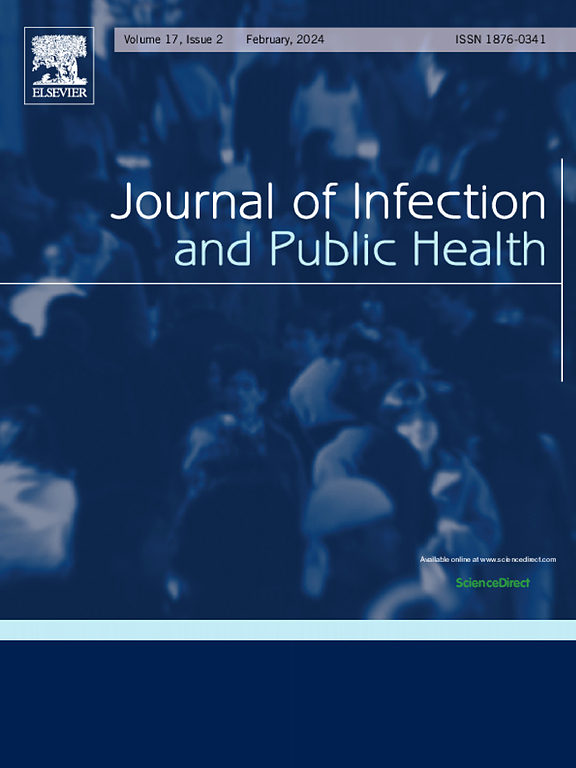利用SARIMAX-LSTM混合模型分析COVID-19对季节性传染病暴发检测的影响
IF 4.7
3区 医学
Q1 INFECTIOUS DISEASES
引用次数: 0
摘要
本研究估计了2005年至2023年韩国季节性传染病的发病率,包括流感、诺如病毒、严重发热伴血小板减少综合征(SFTS)和恙虫病。报告还审查了COVID-19大流行对其传播模式的影响。方法采用SARIMAX模型、长短期记忆(LSTM)神经网络和SARIMAX-LSTM混合模型预测疾病发病率和确定爆发期。将气象数据纳入模型,并使用变化点检测(CPD)来确定疫情趋势的变化。将模型预测与实际数据进行比较,以评估COVID-19对疾病发病率的影响。结果新冠肺炎对流感和诺如病毒的发病率有显著影响,而SFTS和恙虫病的发病率无明显变化。2019冠状病毒病后,流感没有恢复到大流行前的水平,而诺如病毒的发病率则恢复到以前的模式。尽管流感样疾病(ILI)病例在大流行期间有所减少,但预测模型表明疫情可能再次暴发。这些发现强调了针对每种疾病制定量身定制的公共卫生策略的必要性。早期发现和及时干预对于减轻卫生保健负担和改善健康结果至关重要。本文章由计算机程序翻译,如有差异,请以英文原文为准。
Analyzing the impact of COVID-19 on seasonal infectious disease outbreak detection using hybrid SARIMAX-LSTM model
Background
This study estimates the incidence of seasonal infectious diseases, including influenza, norovirus, severe fever with thrombocytopenia syndrome (SFTS), and tsutsugamushi disease, in the Republic of Korea from 2005 to 2023. It also examines the impact of the COVID-19 pandemic on their transmission patterns.
Methods
We employed the Seasonal AutoRegressive Integrated Moving Average with eXogenous variables (SARIMAX) model, long short-term memory (LSTM) neural networks, and a hybrid SARIMAX-LSTM model to predict disease incidence and identify outbreak periods. Meteorological data were incorporated into the models, and change point detection (CPD) was used to identify shifts in outbreak trends. Model predictions were compared with actual data to evaluate the influence of COVID-19 on disease incidence.
Results
The incidence of influenza and norovirus was significantly affected by COVID-19, whereas SFTS and tsutsugamushi disease showed no substantial changes. Influenza did not return to pre-pandemic levels post-COVID-19, while norovirus incidence reverted to previous patterns. Despite a decrease in influenza-like illness (ILI) cases during the pandemic, predictive models indicated a potential resurgence of outbreaks.
Conclusions
These findings highlight the need for tailored public health strategies for each disease. Early detection and timely interventions are essential for reducing healthcare burdens and improving health outcomes.
求助全文
通过发布文献求助,成功后即可免费获取论文全文。
去求助
来源期刊

Journal of Infection and Public Health
PUBLIC, ENVIRONMENTAL & OCCUPATIONAL HEALTH -INFECTIOUS DISEASES
CiteScore
13.10
自引率
1.50%
发文量
203
审稿时长
96 days
期刊介绍:
The Journal of Infection and Public Health, first official journal of the Saudi Arabian Ministry of National Guard Health Affairs, King Saud Bin Abdulaziz University for Health Sciences and the Saudi Association for Public Health, aims to be the foremost scientific, peer-reviewed journal encompassing infection prevention and control, microbiology, infectious diseases, public health and the application of healthcare epidemiology to the evaluation of health outcomes. The point of view of the journal is that infection and public health are closely intertwined and that advances in one area will have positive consequences on the other.
The journal will be useful to all health professionals who are partners in the management of patients with communicable diseases, keeping them up to date. The journal is proud to have an international and diverse editorial board that will assist and facilitate the publication of articles that reflect a global view on infection control and public health, as well as emphasizing our focus on supporting the needs of public health practitioners.
It is our aim to improve healthcare by reducing risk of infection and related adverse outcomes by critical review, selection, and dissemination of new and relevant information in the field of infection control, public health and infectious diseases in all healthcare settings and the community.
 求助内容:
求助内容: 应助结果提醒方式:
应助结果提醒方式:


